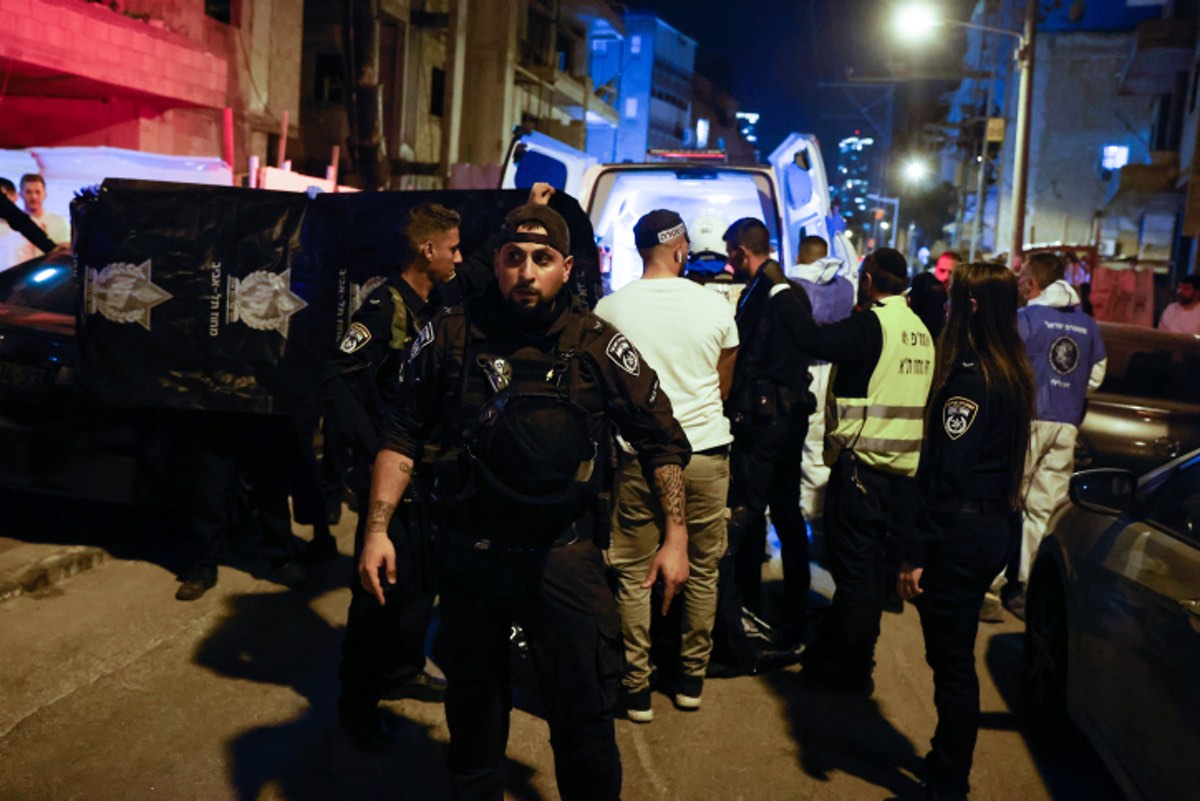(JNS) Diaa Hamarsheh, the Palestinian terrorist who entered Israel illegally from the West Bank village of Yabad near Jenin and who went on a shooting rampage in Bnei Brak on Tuesday night, murdering five people, appears to have acted as part of a localized terror initiative and did not likely receive the assistance of established terrorist organizations.
This can help explain why it was difficult for Israeli intelligence to pick up on Hamarsheh’s preparations in time since the more localized and smaller the terror infrastructure is, the less of a trail it leaves behind for security forces, effectively slipping under the radar.
While the Shin Bet intelligence agency successfully thwarts between 500 to 600 attacks per year, its preventative net is never an insurance policy guaranteeing no new attacks.
Hamarsheh’s spate of violence fits into the same scope of attacks that occurred in recent days before him, and even though the ideological background may differ somewhat, the concept of indiscriminately murdering Israeli Jews and of acting without the involvement of larger terror organizations is present in the incidents of the past week.
This holds true for the Bedouin Israeli ISIS-affiliated lone-wolf terrorist who murdered four Israeli civilians in Beersheva on March 22 in a car-ramming and stabbing spree, as well as the two-man ISIS-affiliated cell from Umm el-Fahm in northern Israel that went on a shooting rampage in Hadera on March 27, murdering two Border Police officers.
According to a recent report by the Meir Amit Intelligence and Terrorism Information Center, at the peak of ISIS’s strength in 2014-15, the number of Arab Israelis who joined Salafi-jihadism totaled around 50. Some were killed in battle in Syria, and others returned to Israel and stood trial. ISIS activities targeted Bedouin communities in the Negev Desert for recruitment for years.
Israel has experience in this kind of terrorism. In the past, during the 2015-16 wave of lone-wolf Palestinian terrorism, Israeli security forces made successful use of social-media monitoring to pick up suspicious messages and were able to stop many attackers in time after learning about this new kind of threat.
At the same time, the defense establishment at that time recommended that the government pursue a policy that differentiates between ordinary Palestinians and terrorists by making it easier for those not involved in terrorism to make a living, including working in Israel, while coming down hard on terrorists, their enablers and their immediate environments.
This approach, defense chiefs argued, ended up successfully limiting the number of violent incidents in 2015-16 by being surgical and by creating incentives to many Palestinians to remain outside of the violent incidents at that time.
Focus counter-terrorism efforts on dangerous elements
It appears as if this same approach has been accepted by the security cabinet on Wednesday. The cabinet voted not to place the West Bank under closure during the upcoming Ramadan holiday and not to restrict Palestinians who received legal work permits—after considerable screening—from reaching their workplaces in Israel.
This attempt to surgically focus counter-terrorism efforts on dangerous elements alone also found expression on Thursday in the form of a large Israeli counter-terrorism raid in Jenin to apprehend security suspects.
Soldiers from the undercover Duvdevan unit, together with Border Police, encountered Palestinian gunfire during the operation, and one Israeli soldier was lightly injured. In the return fire, three Palestinian combatants were killed, according to media reports. This represents a stepped-up Israeli counter-terrorism drive.
According to an IDF statement, the troops apprehended three individuals suspected of involvement in the Bnei Brak attack.
“The security forces simultaneously operated in the nearby town of Yabad and apprehended an additional suspect involved in the Bnei Brak terrorist attack. During the counterterrorism activity, a soldier who had located an M16 assault rifle in a suspect’s home was injured by assailant gunfire. The soldier was provided with initial medical aid at the scene and was evacuated by helicopter to a hospital for further treatment,” said the military.
IDF troops conducted operational activity and apprehensions in several other locations in the West Bank as well, apprehending an ISIS terrorist operative in Hebron. Three individuals suspected of inciting violence were also arrested.
In total, Israeli security forces apprehended 31 suspects.
Hamas is continually inciting Palestinians
Meanwhile, Hamas is seeking to maintain relative calm in the Gaza Strip in order to rebuild its terrorist army and enjoy the assistance flowing into Gaza for the purpose of reconstruction of civilian infrastructure.
As such, Hamas, as well as Palestinian Islamic Jihad and the Al-Aqsa Martyrs Brigades, praise every terror attack on Israelis, even though they did not directly launch them.
At the same time, as the Meir Amit Center noted, Hamas is continually inciting Palestinians in the West Bank and eastern Jerusalem, along with Israeli Arabs, to terrorism.
Earlier this month, Palestinian terror factions established what they called “the national authority for supporting Palestinians residing in Israel,” which is designed to try and recreate the scenes of the May 2021 conflict between Israel and Hamas, when widespread violence and unrest swept across the Arab-Israeli sector.
It is in Israel’s interests, naturally, to ensure that such recruitment and linkage efforts are monitored and cut off systematically.
In the meantime, the current wave of terrorism has featured localized efforts acting on extremist ideology, and Israel has employed a surgical approach in order to try to contain and then extinguish the chain reaction of attacks.

